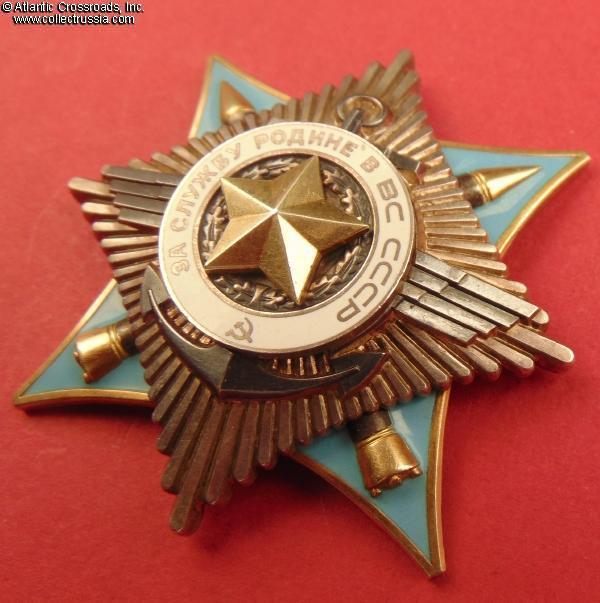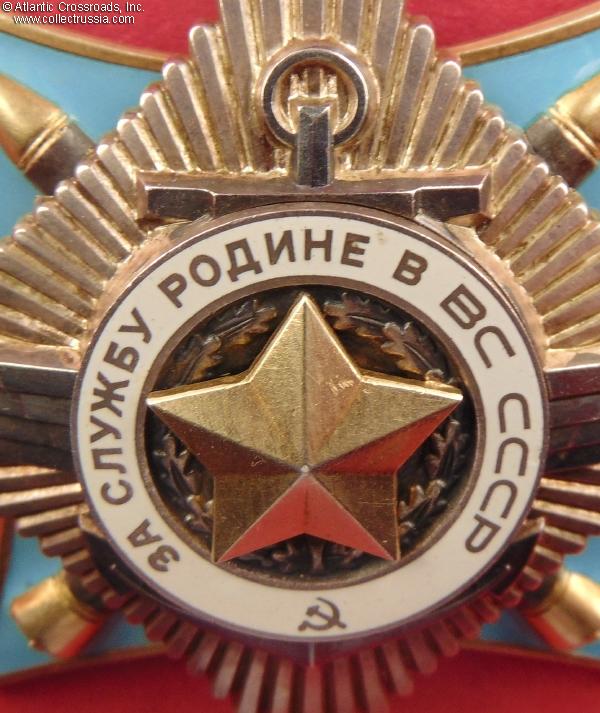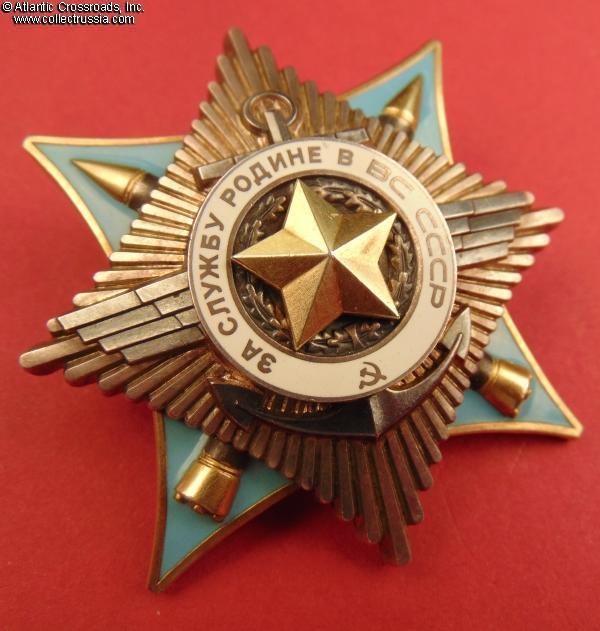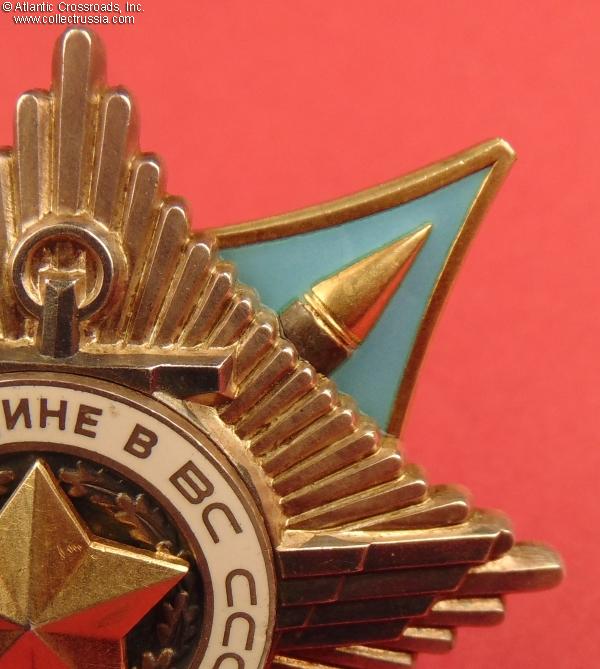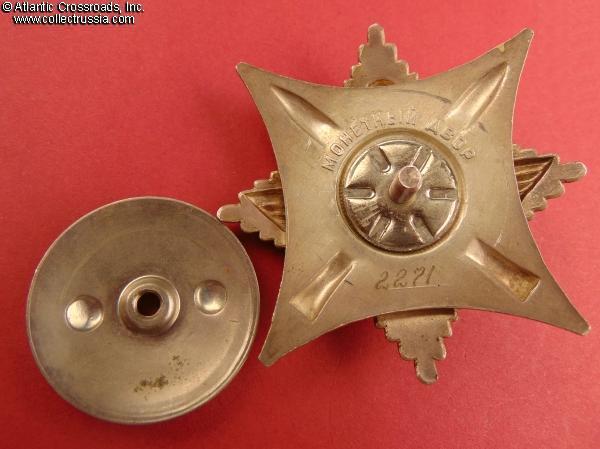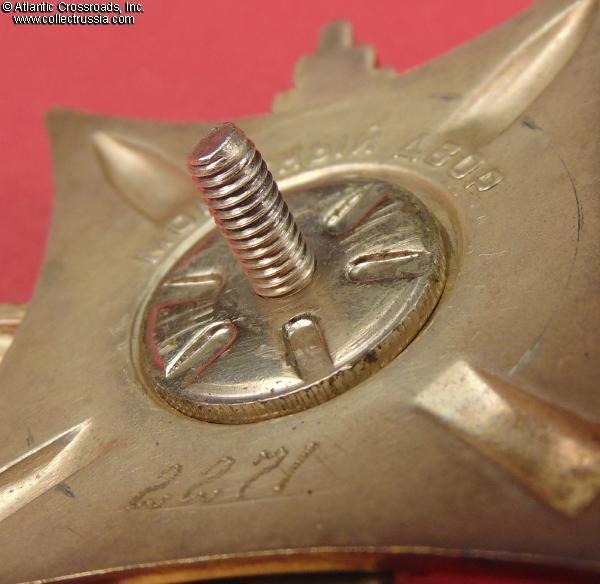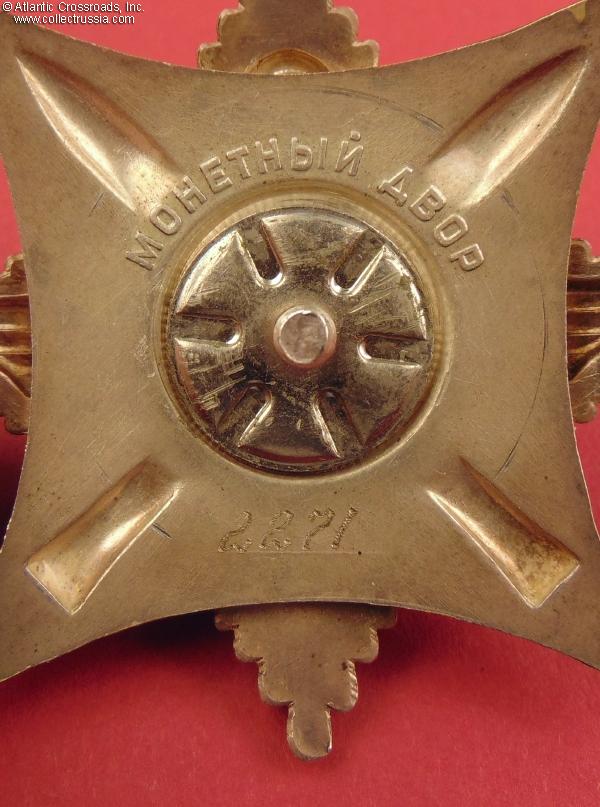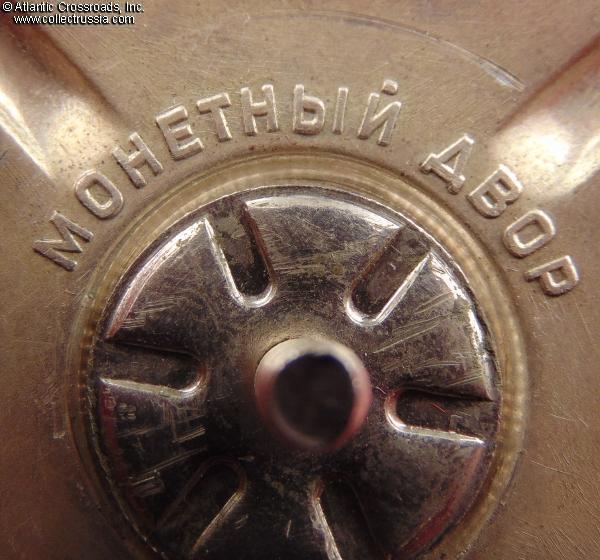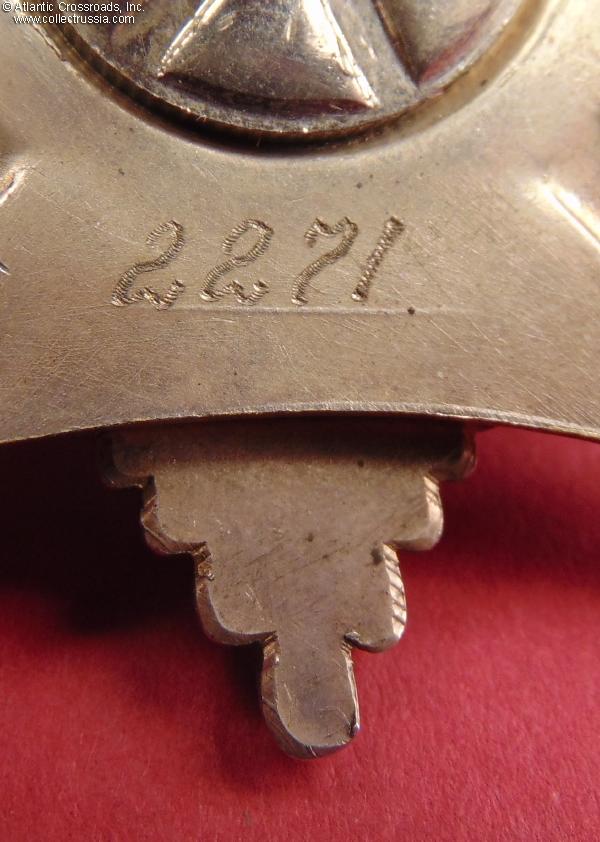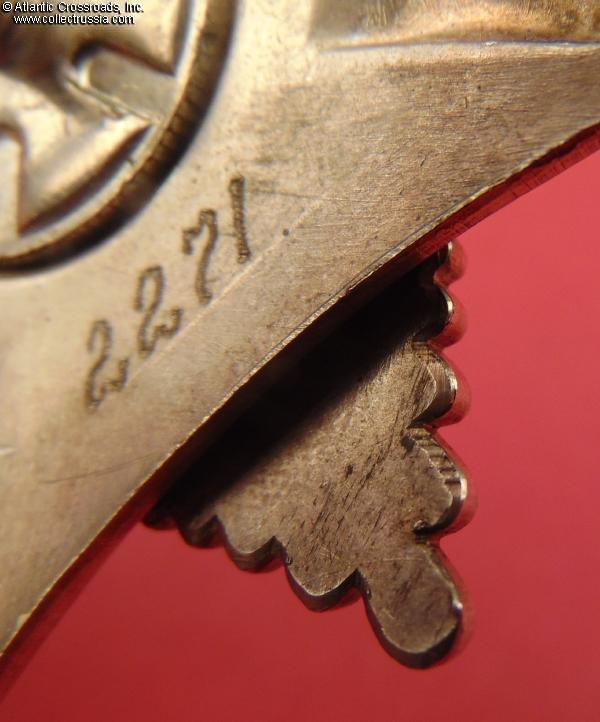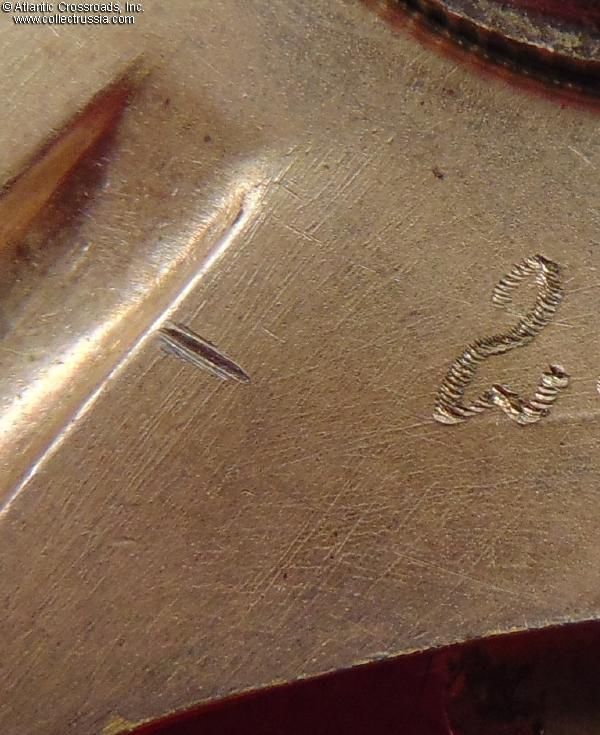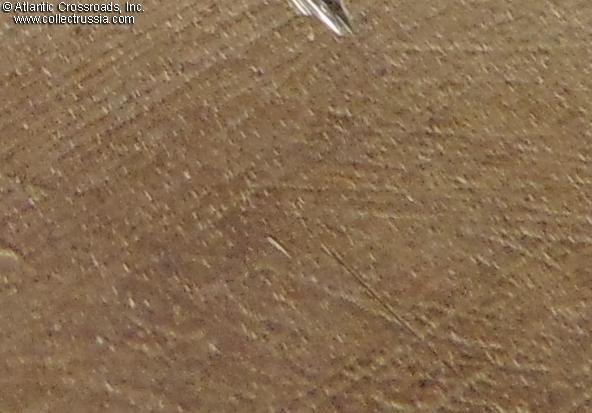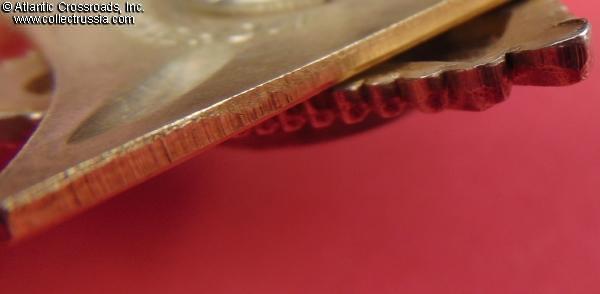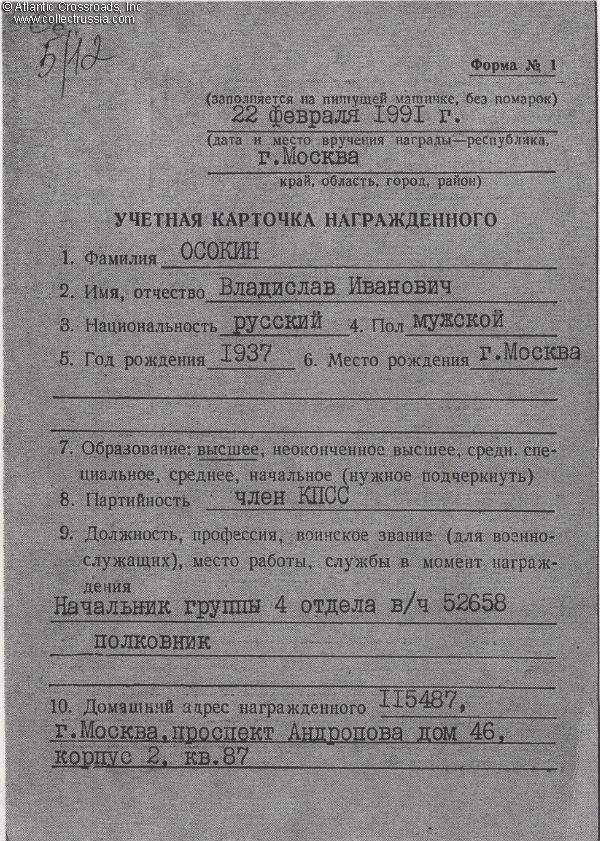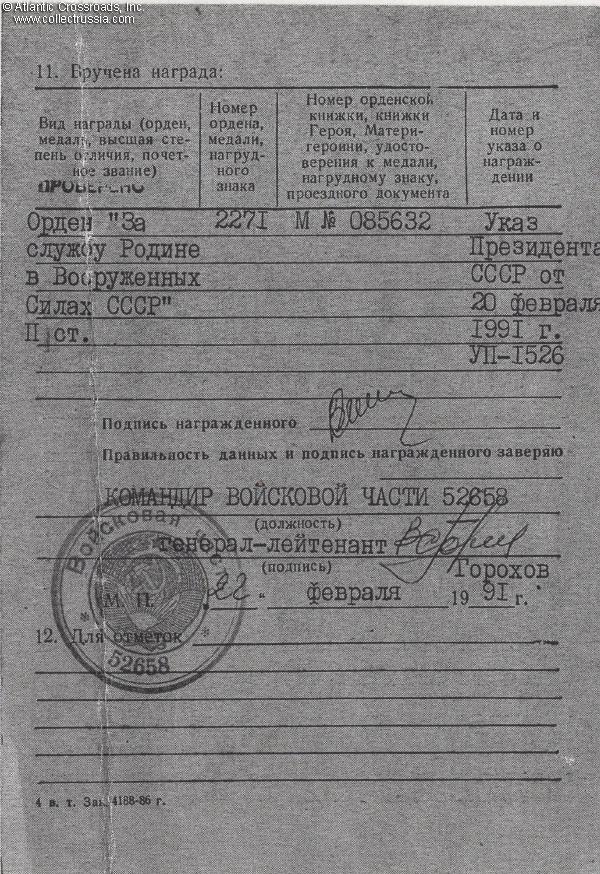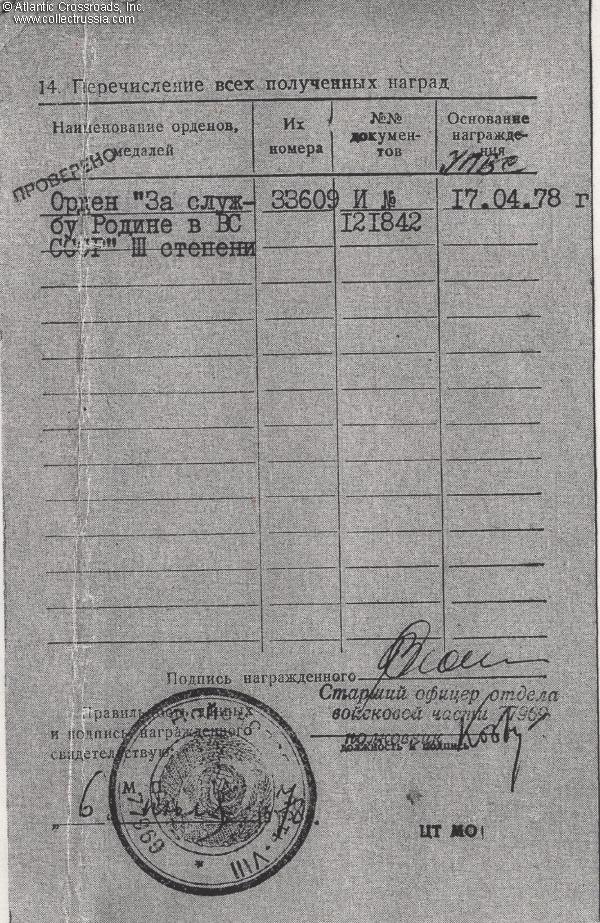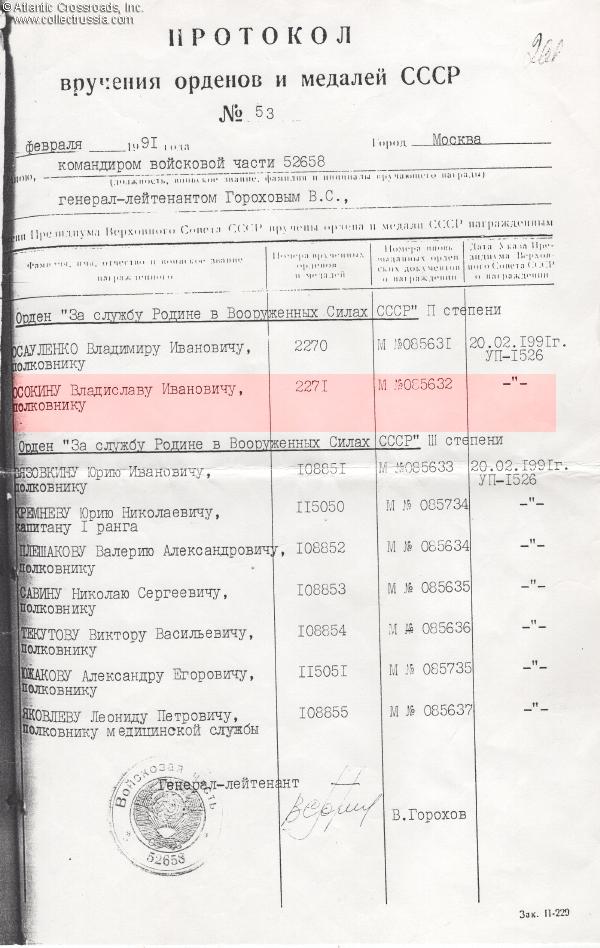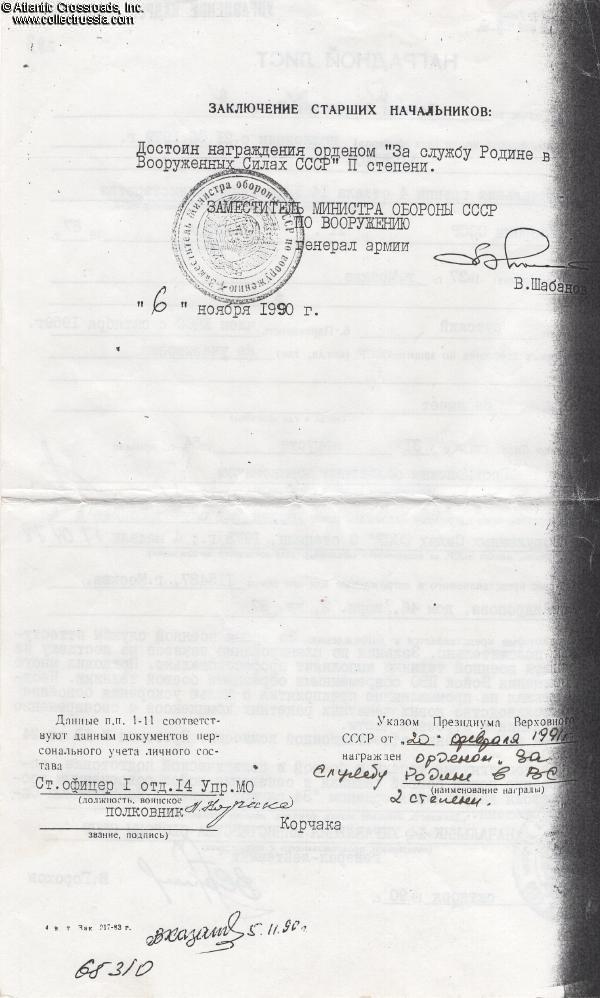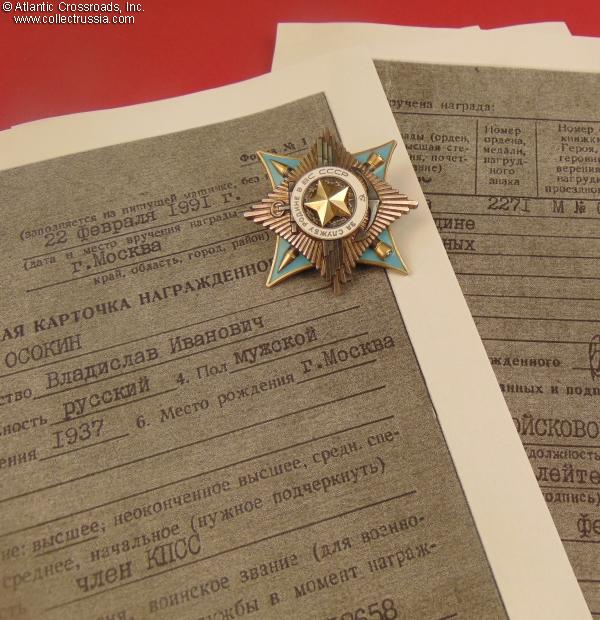
Order for Service to the Homeland in the Soviet Armed Forces, 2nd class, #2271, awarded on 20 February 1991 to Colonel Vladislav Osokin (Владислав Иванович Осокин).
Silver gilt, enamels; measures 57.3 mm in height, 57.4 mm in width; weighs 64.5 g without screw plate. Displays characteristic "stubby" tips of the longest horizontal rays (when viewed from the reverse). This sub-variation of the order has all of the peculiar thin raised lines in the lower left part of the reverse as well (apparently from polishing of the die) that are a requisite feature of the original 2nd cl. orders. The serial number is engraved in the manner standard for the 2nd class.
The order is in excellent condition. The original gilt is beautifully preserved. The
Silver gilt, enamels; measures 57.3 mm in height, 57.4 mm in width; weighs 64.5 g without screw plate. Displays characteristic "stubby" tips of the longest horizontal rays (when viewed from the reverse). This sub-variation of the order has all of the peculiar thin raised lines in the lower left part of the reverse as well (apparently from polishing of the die) that are a requisite feature of the original 2nd cl. orders. The serial number is engraved in the manner standard for the 2nd class.
The order is in excellent condition. The original gilt is beautifully preserved. The ridges of the star are perfectly crisp. The enamel is likewise perfect, completely free of any wear or even the microscopic contact marks that could be found under a 10x magnification. The original factory-applied dark finish on the anchor and wings is pristine. The screw post is of full length, approx. 9 mm, and includes an original screw plate.
Vladslav Osokin was born in Moscow in 1937. He joined the Soviet Armed Forces in August 1954 at the age of 17, most likely by enrolling as a cadet in a junior military academy in the city of Grodno, and in 1959, became a member of the Communist Party. Little is known about the early part of Osokin's military career, but he was apparently a weapons research specialist from the beginning. As of April 1978, he had the rank of lieutenant colonel and position of a senior engineer in the Military Unit #77969. Although not identified other than its code number in the archival award documentation, this outfit is known from the Internet sources to have been the 4th Main Directorate of the USSR Defense Ministry. Formed in 1953, it was responsible for the development and deployment of the S-25 antiaircraft rocket system protecting Moscow (naturally, ever the main concern of the Soviet military leadership to the detriment of almost everything else). Later, the 4th Main Directorate expanded to include various smaller direcorates, including those supplying antiaircraft rockets to Warsaw Pact countries, developing early warning systems, and deploying defenses against space-based weapons. It even formed special departments, 6th and 9th , respectively, for directing pioneering research into "weapons of war based on new principles of physics" and leading the work on "spceical warheads" (i.e. nuclear warheads) for antiaircraft rockets. It is reasonable to assume that Osokin joined the 4th Main Directorate in as early as the late 1950s or early 6os, perhaps immediately upon graduating from a military engineering academy. The award paperwork does not mention his specific role, but he was clearly highly successful: on 17 April 1978, he was awarded his first high decoration, the Order for Service to Homeland in the Soviet Armed Forces, 3rd cl. (#33609).
In August of the following year, Osokin was promoted to colonel. By the end of 1980s, he became a group chief in the 4th Department, 14th Directorate of the Ministry of Defense (Military Unit #52658). Although we could not find the name of the new directorate, judging by the Osokin's subsequent award recommendation for the Order for Service to the Homeland, 2nd cl., its functions included development and deployment of antiaircraft weapons. According to the commendation, Osokin "put a lot of effort in supplying the Antriaicraft Troops with examples of modern combat equipment." He often served as a Defense Ministry liaison with the weapons industry, taking trips to armament factories "to ensure accelerated development and serial production of new antiaircraft rocket complexes, and their timely deployment in field units." The award commendation was submitted on 26 October 1990 by Lieutenant General Vyacheslav Gorokhov, Chief of the 14th Directorate. (Gorokhov was a very prominent military commander who at some point occupied the position of Deputy Chief of the Main Rocket Artillery Directorate and Deputy Defense Minister for Military Radio Electronics; later, he would reach the rank of Colonel General.) On 6 November 1990, the recommendation was approved by General of the Army Shabanov, Deputy Defense Minister for Armaments. The award was bestowed upon Col. Osokin by a decree of the Presidium of the Supreme Soviet on 20 February 1991, mere 10 months before the collapse of the USSR.
The second class of the Order for Service to the Homeland in the Soviet Armed Forces is among the rarest of all Soviet decorations. Although serial numbers for the 2nd class may go as high as 3500, not all of the available numbers were utilized. Far fewer awards were actually made and issued than the serial number range would suggest, only 589 in total - a tiny number by the Soviet standards. To compare, the serial numbers of the 3rd class of this order can go above 140,000. Unlike the 2nd class, a substantial quantity of unissued 3rd cl. awards remained in the inventory and eventually made it to the collectors market after the breakup of the USSR.
The rarity of the 2nd cl. and the fact that it seemingly differs from the 3rd cl. only by the gilt finish on the tips of the rockets and on the central star created an incentive to manufacture fake 2nd cl. orders by "upgrading" the 3rd cl. In most cases, fakers simply erase the serial number on an unissued piece, add gold plating, sandblast the reverse, and engrave a low number in line with what should be expected of a 2nd cl. Such fakes are relatively easy to spot because of the typically crude serial number engraving and incorrect sanded surface of the reverse. There are however harder cases, such as fake 2nd cl. made of low-numbered 3rd cl. specimens. Fortunately, there are features of the 2nd cl. die that make it different from the 3rd cl., such as the "ideosincracies" of the reverse and shape of the tips of the starburst. For a very detailed explanation of the differences, visit our YouTube channel CollectRussia: we have a special episode dedicated to the Order for Service to the Homeland with fake vs original comparison illustrated by close-up photos and schematic sketches.
Research Materials: photocopy of the award record cards for the 3rd cl. and 2nd cl. of the Order for Service to the Homeland; official
record of awards with serial numbers issued in February 1991 by the Military Unit #52658, including Osokin's Order for Service to the
Homeland, 2nd cl.; award commendation for the Order for Service to the Homeland, 2nd cl.
$3,900.00 Add to cart

